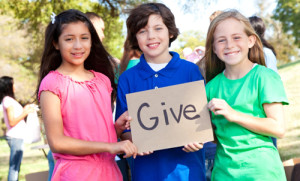Charitable donations, philanthropic trends and organizations, these are terms usually associated with adult age groups. What is the most impressive part of the latest shift in cultural thinking, is how children are choosing to help others all by themselves, without guidance from an adult figurehead. Philanthropy the word has greek roots which means “for the love of humanity”. This type of giving, on small and large scales by individuals and businesses has been incredible to observe and be a part of. The addition of younger generations to the giving community is a welcomed migration from 10 years ago.
For decades, philanthropy was what people did when they acquired a grand amount of money, or grew older and wanted to help others in any way they could. Now, it does not take a wealthy person like Bill Gates to be a serial philanthropist, anyone who can give their time and effort to a good cause, even young people are a part of the movement. Younger people shop particular brands because of their commitment to charity, knowing their dollars will go to not only the company they purchase from, but others who need it more.
Recently in Lawrence, Massachusetts, eight members of the Boys and Girls Club were given $5,000 to issue grants to nonprofit organizations that could use the extra monetary help. After 10 weeks of research, diving into many companies and evaluating their cause and need, the group presented their proposal to an advisory board. They awarded $2,000 to an animal adoption center for animal vaccinations. $2,000 went to a social justice program, focusing its efforts on a communal beautification program. The final $1,000 was issued to a local YMCA to use on it s outdoor leadership program for teenagers.
Exposing young people to the many trends of philanthropy starts the practice of philanthropy early in life. Once someone has caught the charity bug, it’s hard to shake, and we may be seeing a massive resurgence of youth involved with charity throughout their long lives.
To read the original article, please click here.